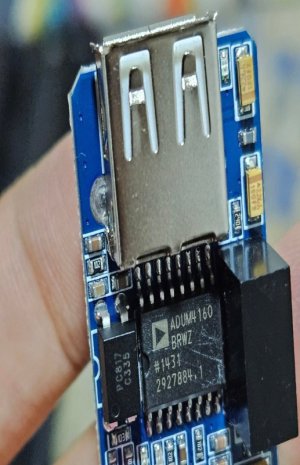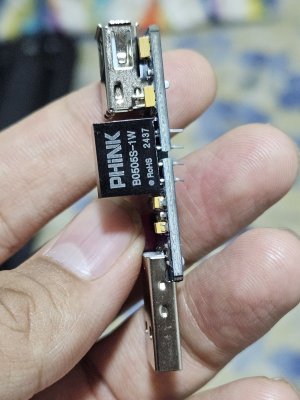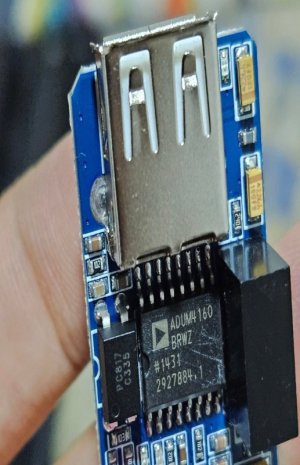I recently conducted an experiment with my setup that yielded noticeable improvements.
Since the WiiM Ultra has only one USB port, I use a TP-Link USB hub to connect both my USB drive and a DDC. Although my DDC already features galvanic isolation, I wanted to see if I could further reduce noise introduced by the USB hub and hard drive before it reaches the DDC.
After researching online, I discovered a USB voltage isolator based on the ADUM3160/4160 chip, designed to provide electrical isolation between USB ports.
Given that my DDC already incorporates galvanic isolation, I wasn’t expecting much improvement, but since the device cost only around $10, I decided to give it a shot. To my surprise, the results were remarkable. It further reduced noise, leading to an even wider soundstage, tighter and more controlled bass, and a refined overall presentation.
For anyone using USB as an input in their system, I recommend trying a USB isolator. It’s a simple and cost-effective tweak that can make a meaningful difference!


Since the WiiM Ultra has only one USB port, I use a TP-Link USB hub to connect both my USB drive and a DDC. Although my DDC already features galvanic isolation, I wanted to see if I could further reduce noise introduced by the USB hub and hard drive before it reaches the DDC.
After researching online, I discovered a USB voltage isolator based on the ADUM3160/4160 chip, designed to provide electrical isolation between USB ports.
Given that my DDC already incorporates galvanic isolation, I wasn’t expecting much improvement, but since the device cost only around $10, I decided to give it a shot. To my surprise, the results were remarkable. It further reduced noise, leading to an even wider soundstage, tighter and more controlled bass, and a refined overall presentation.
For anyone using USB as an input in their system, I recommend trying a USB isolator. It’s a simple and cost-effective tweak that can make a meaningful difference!



